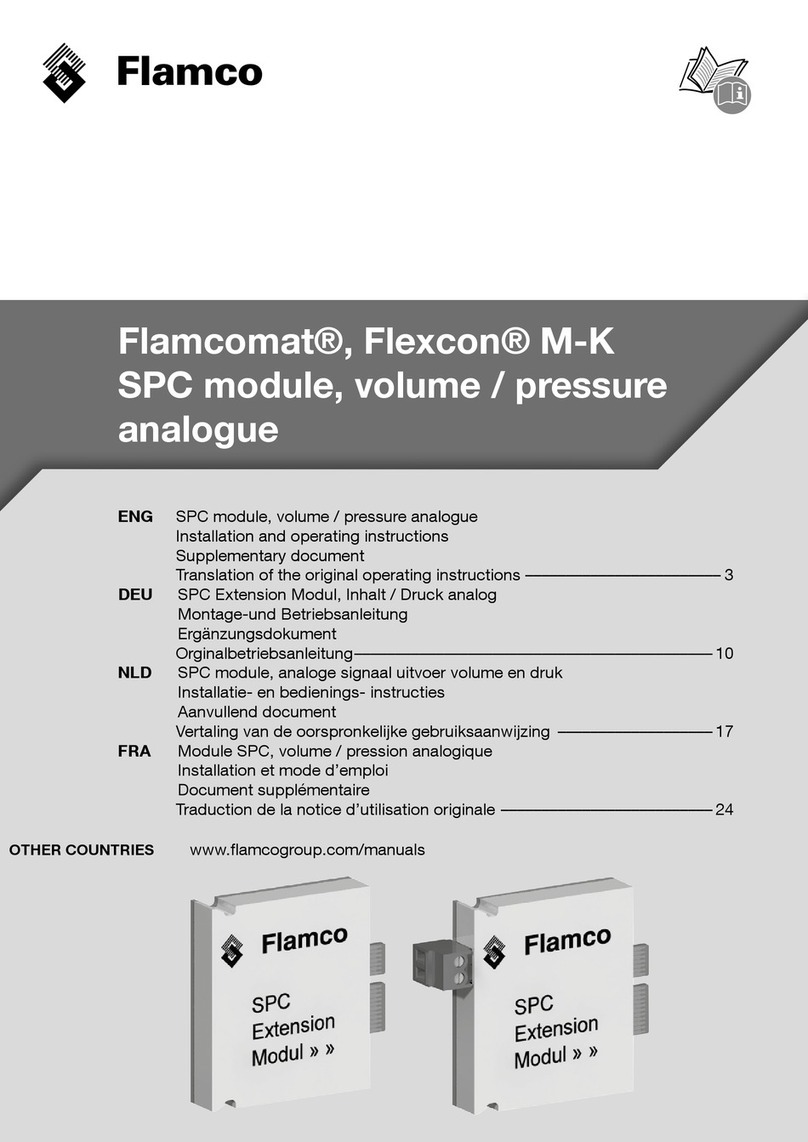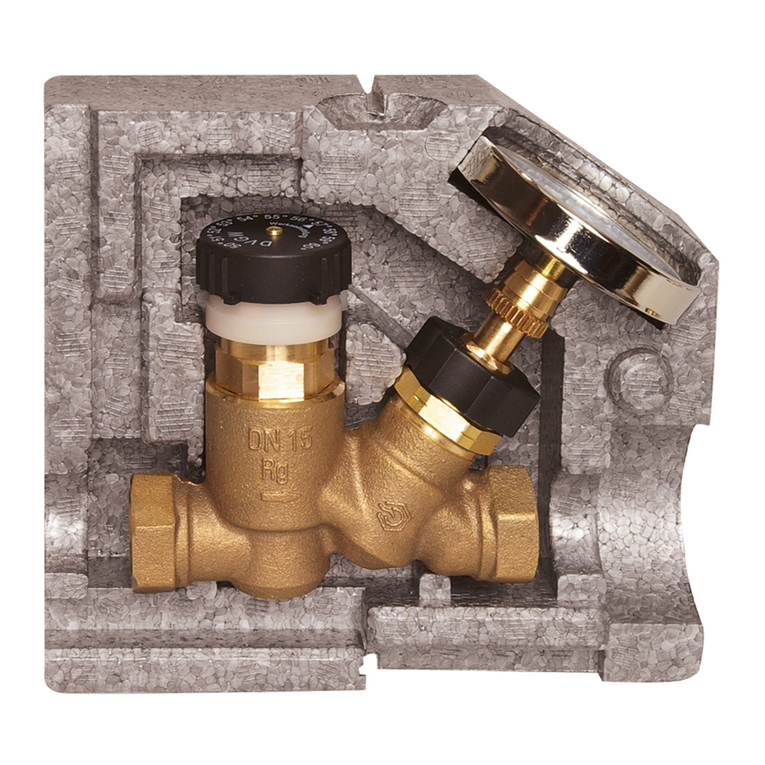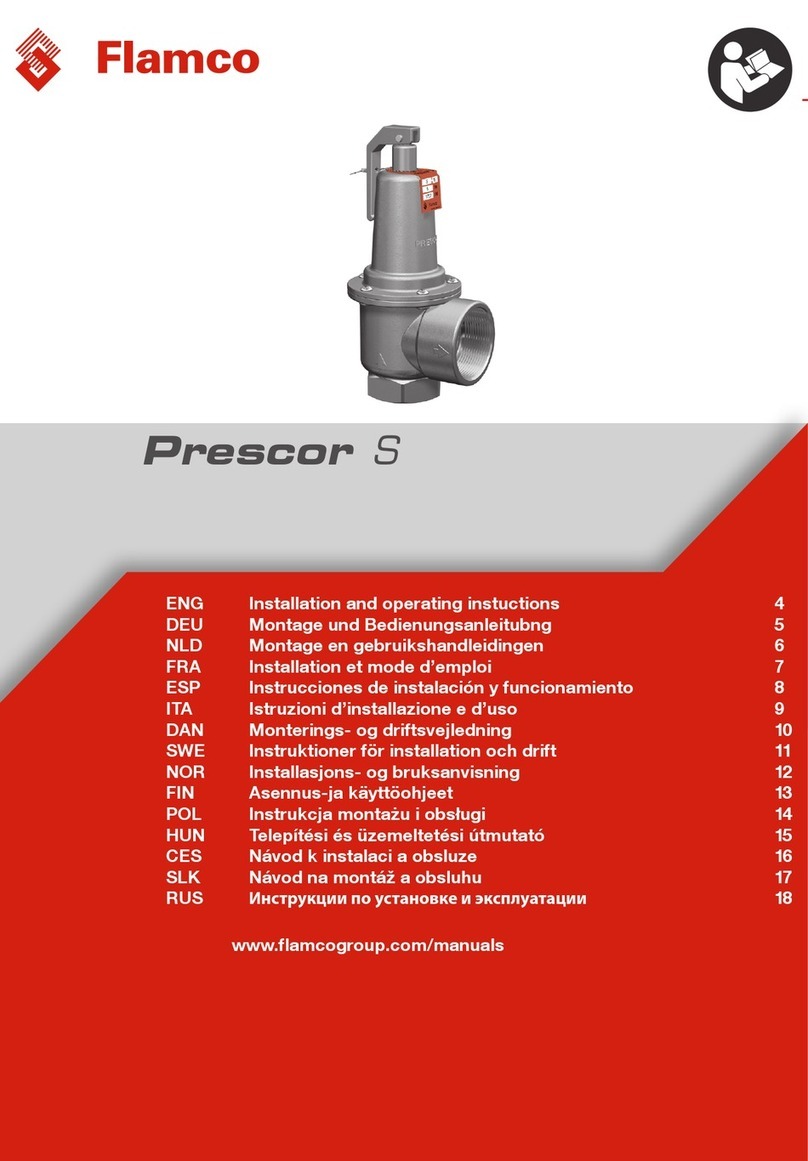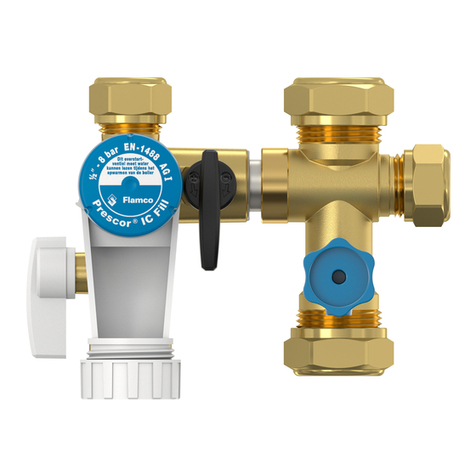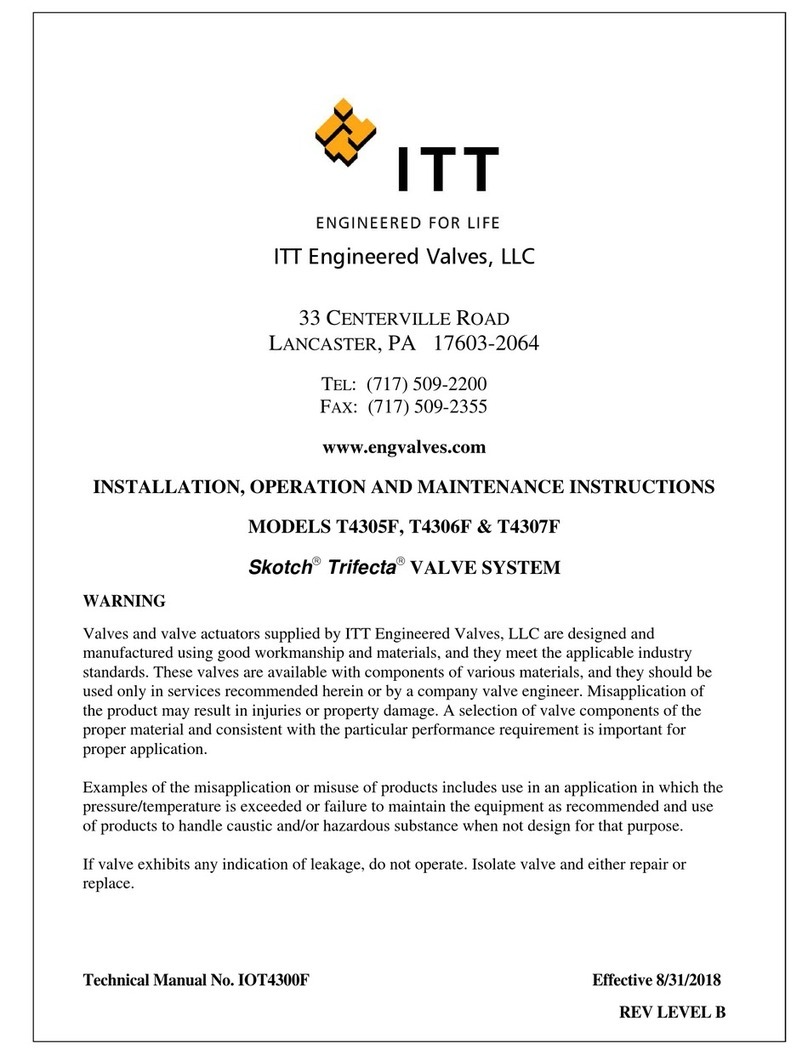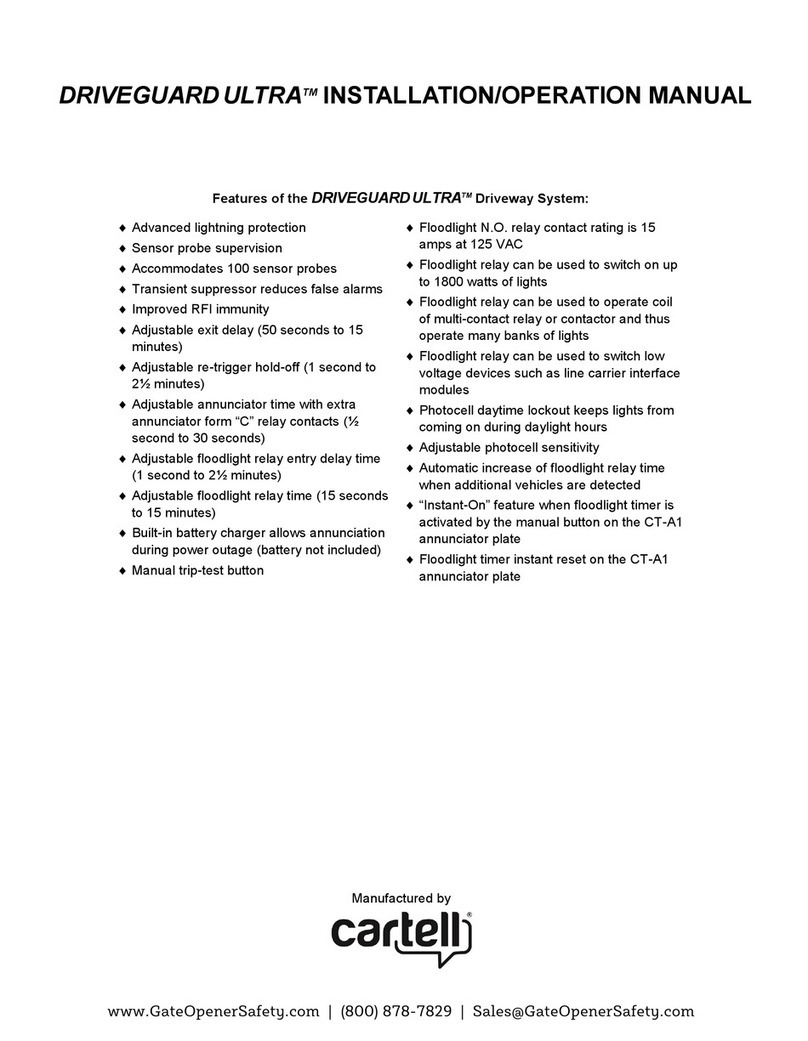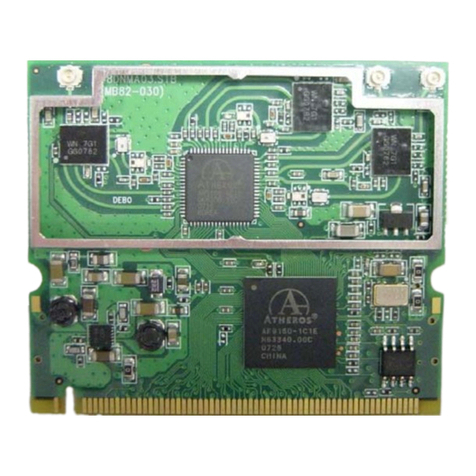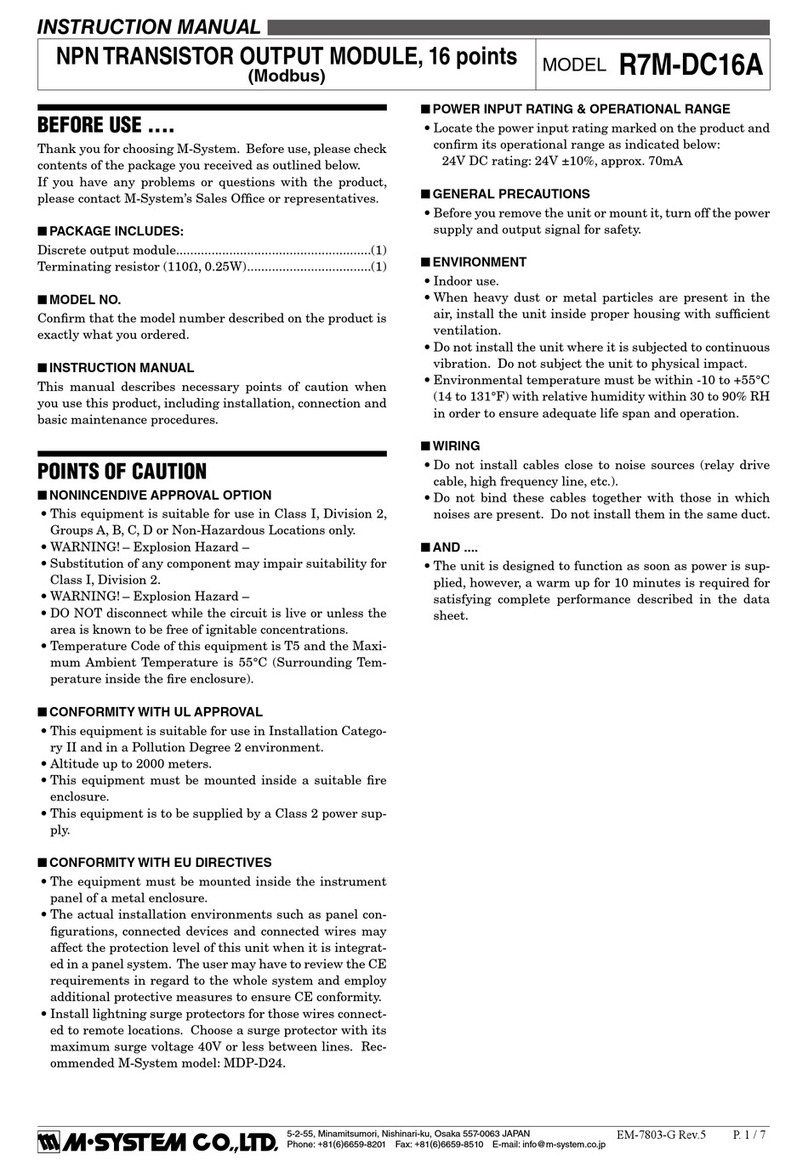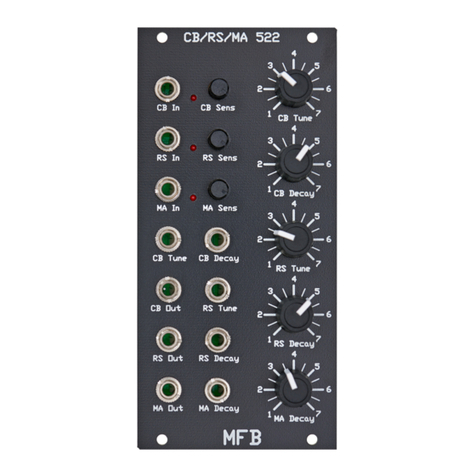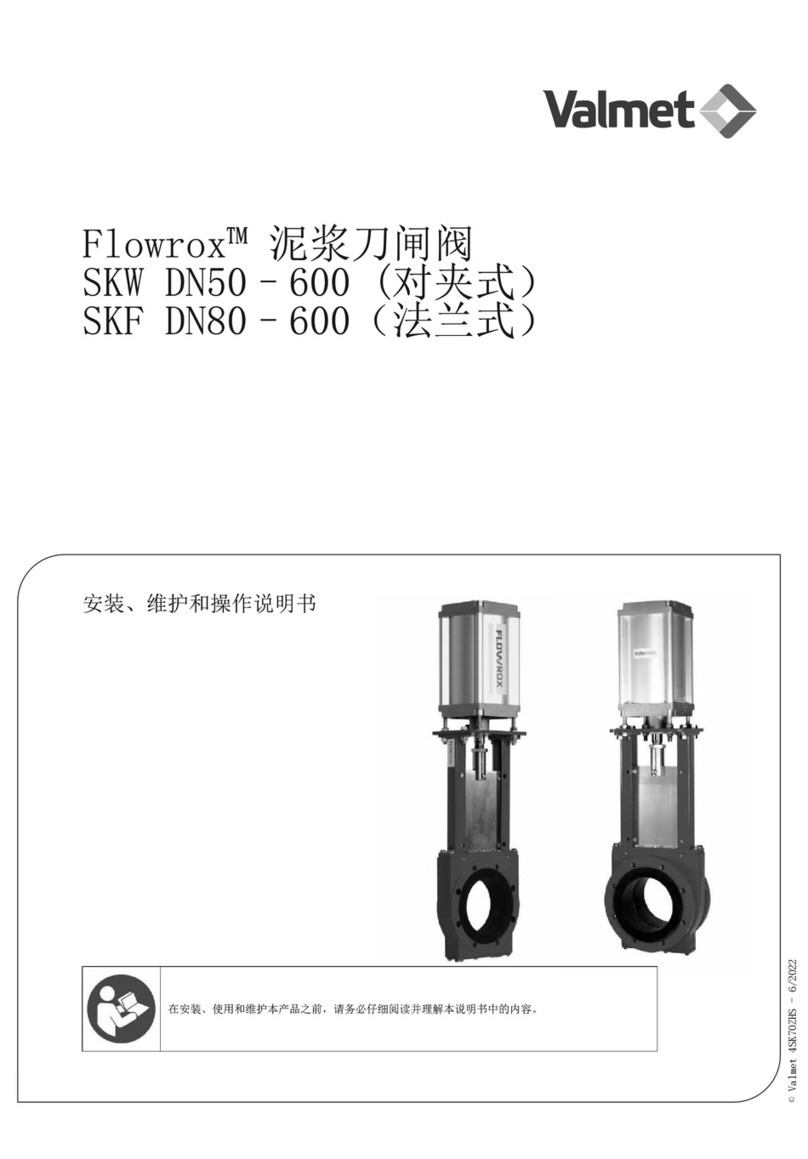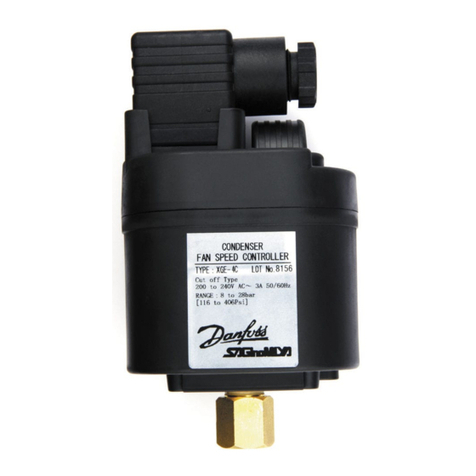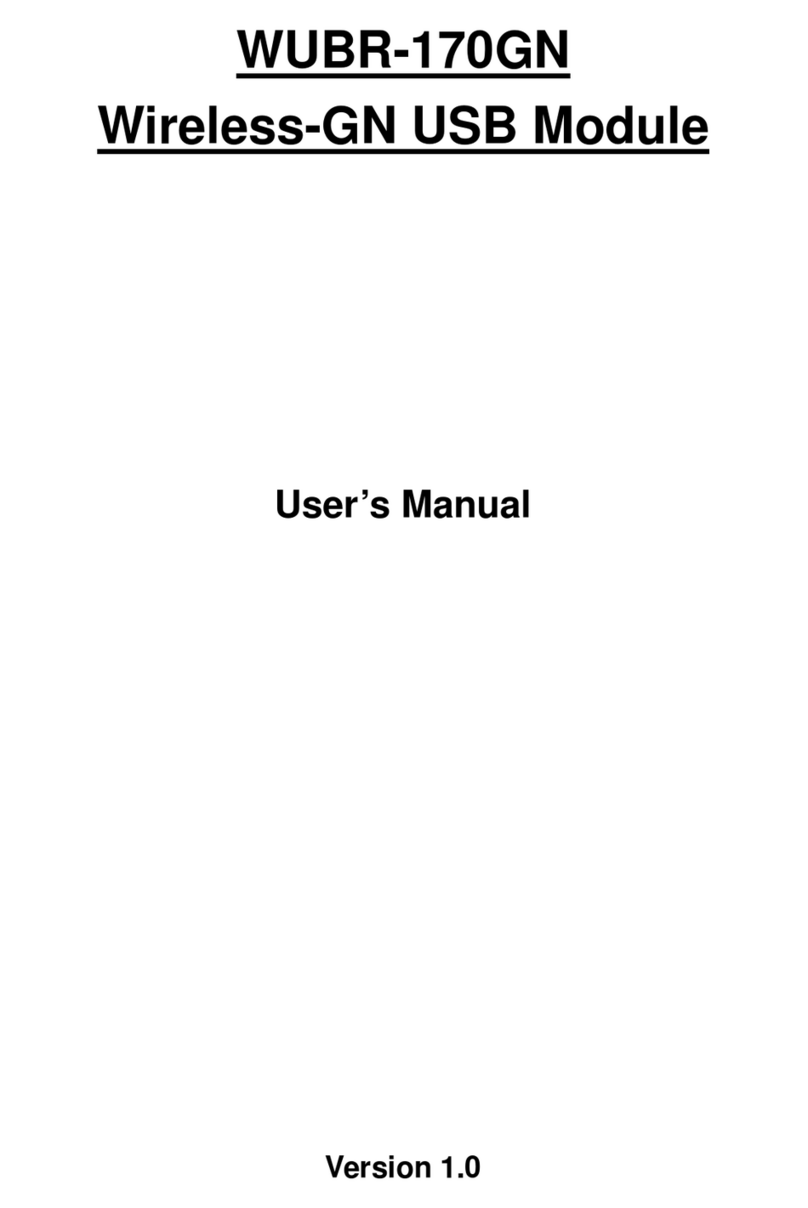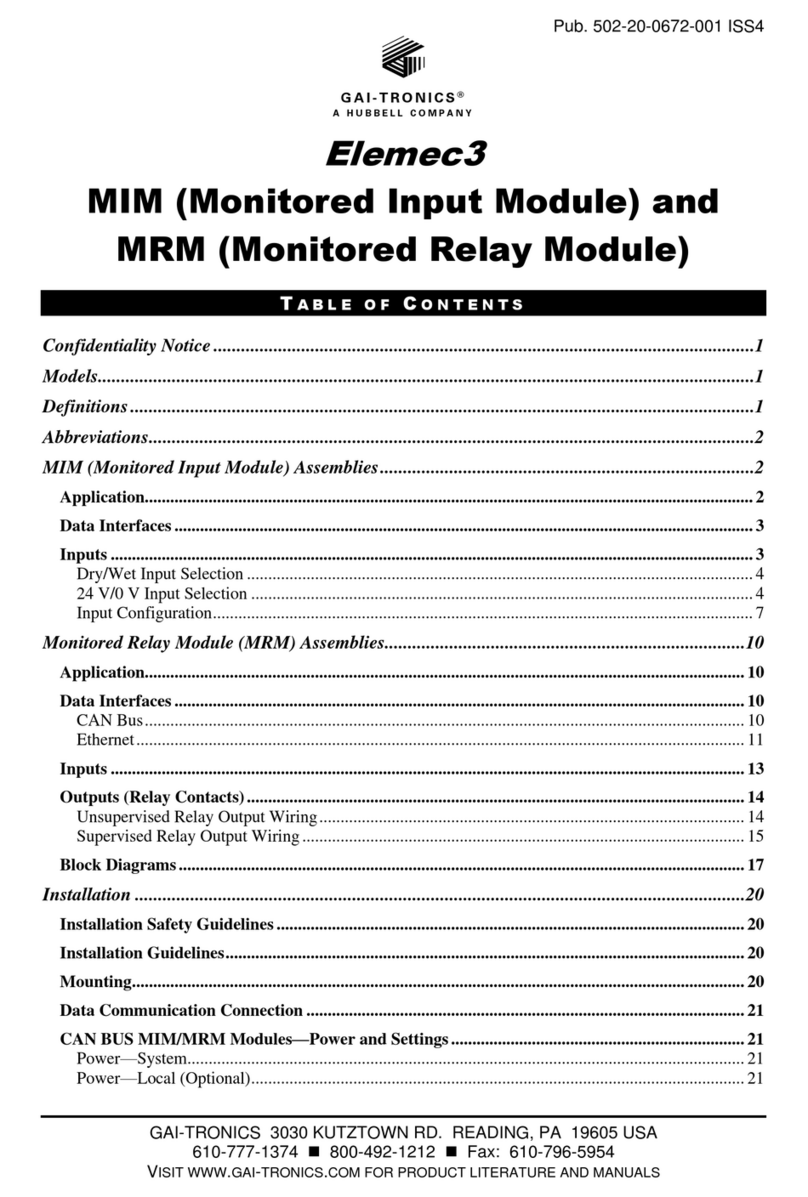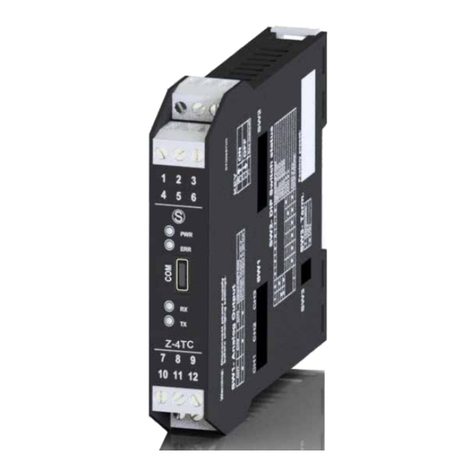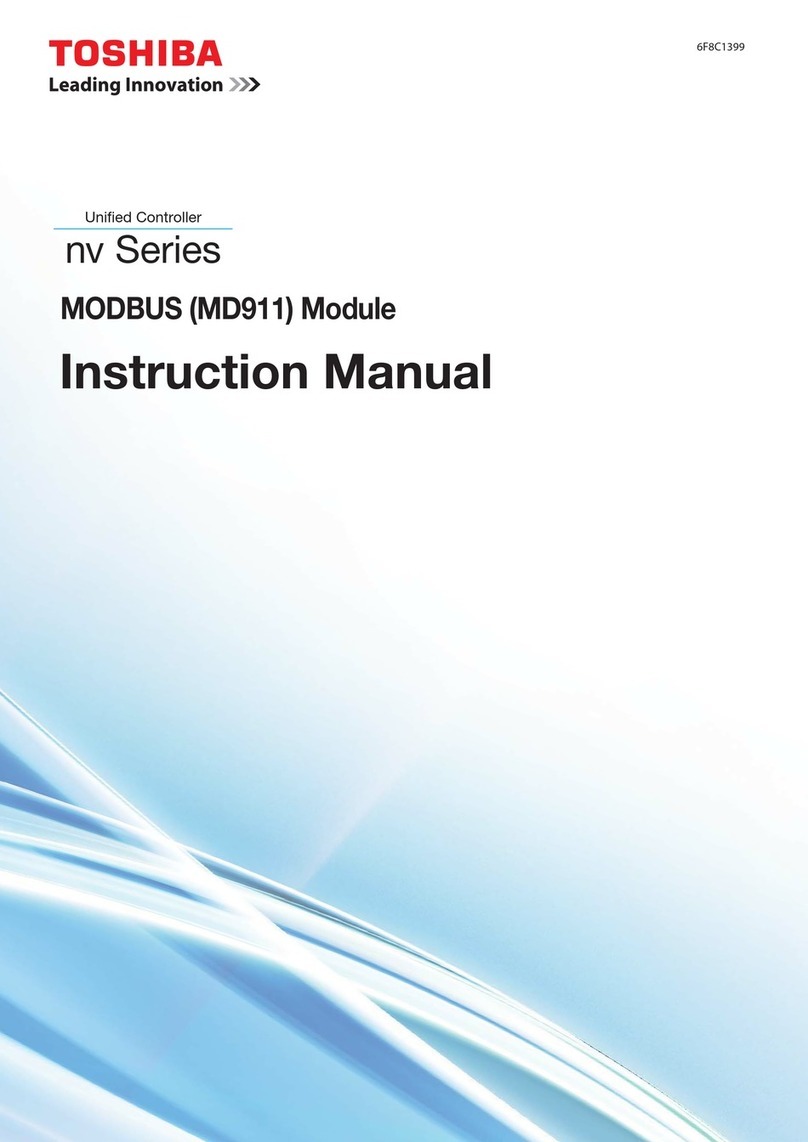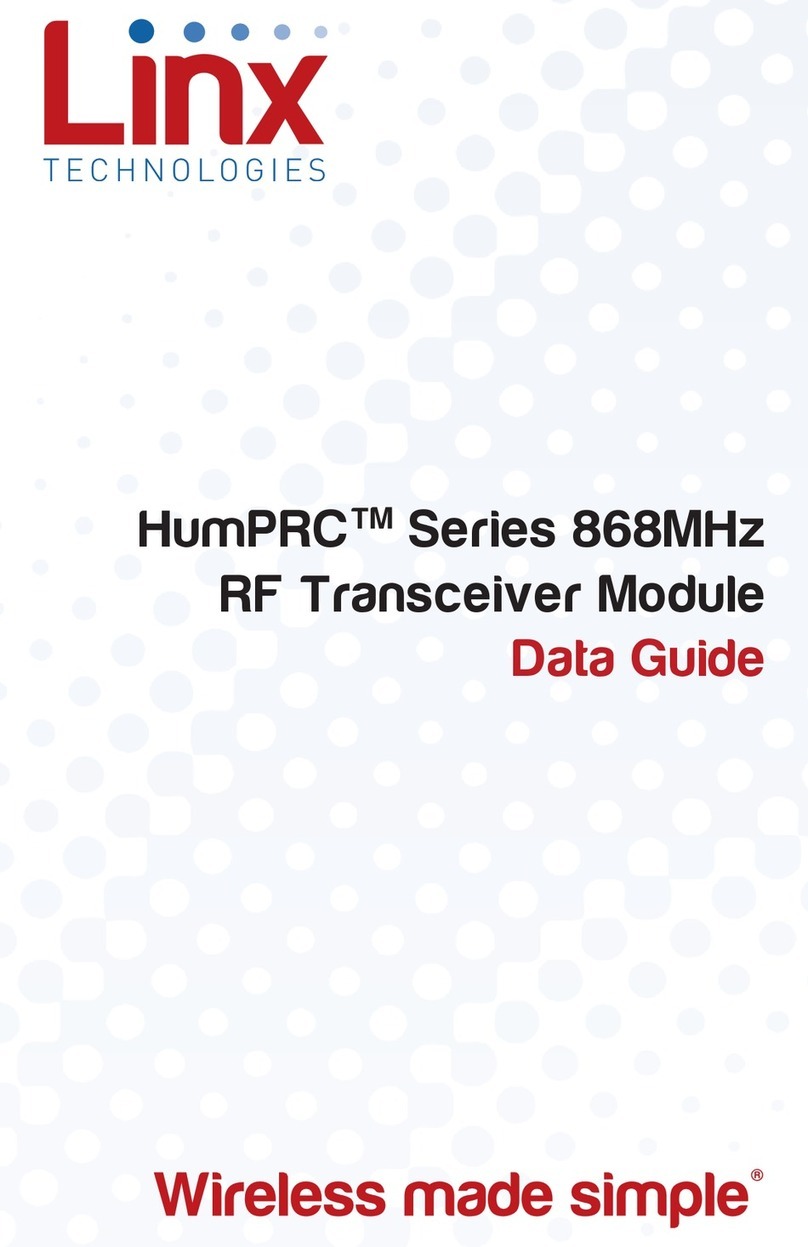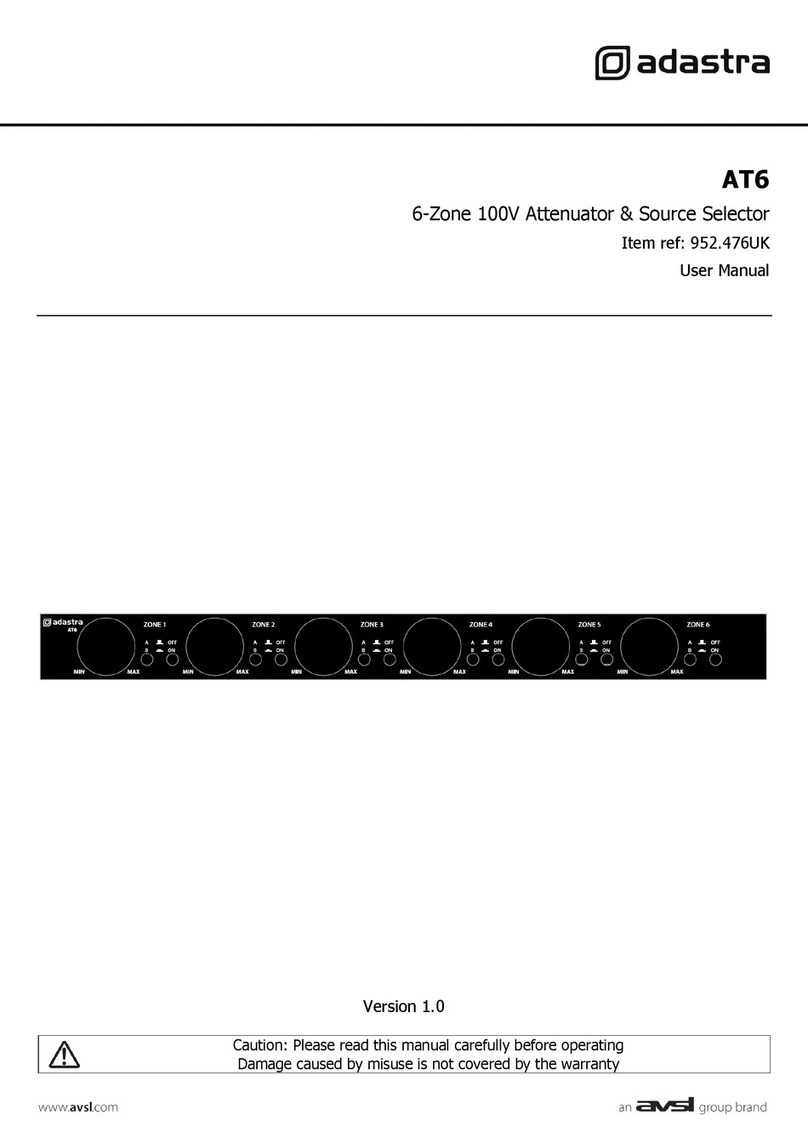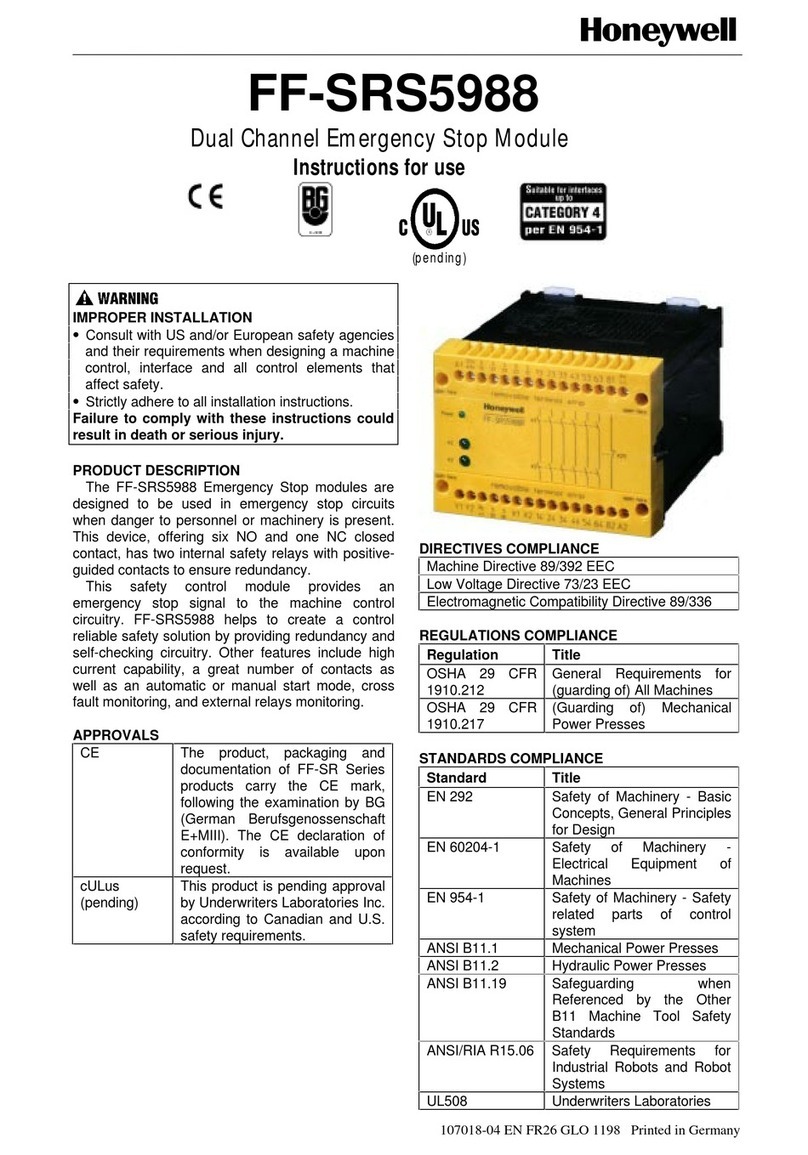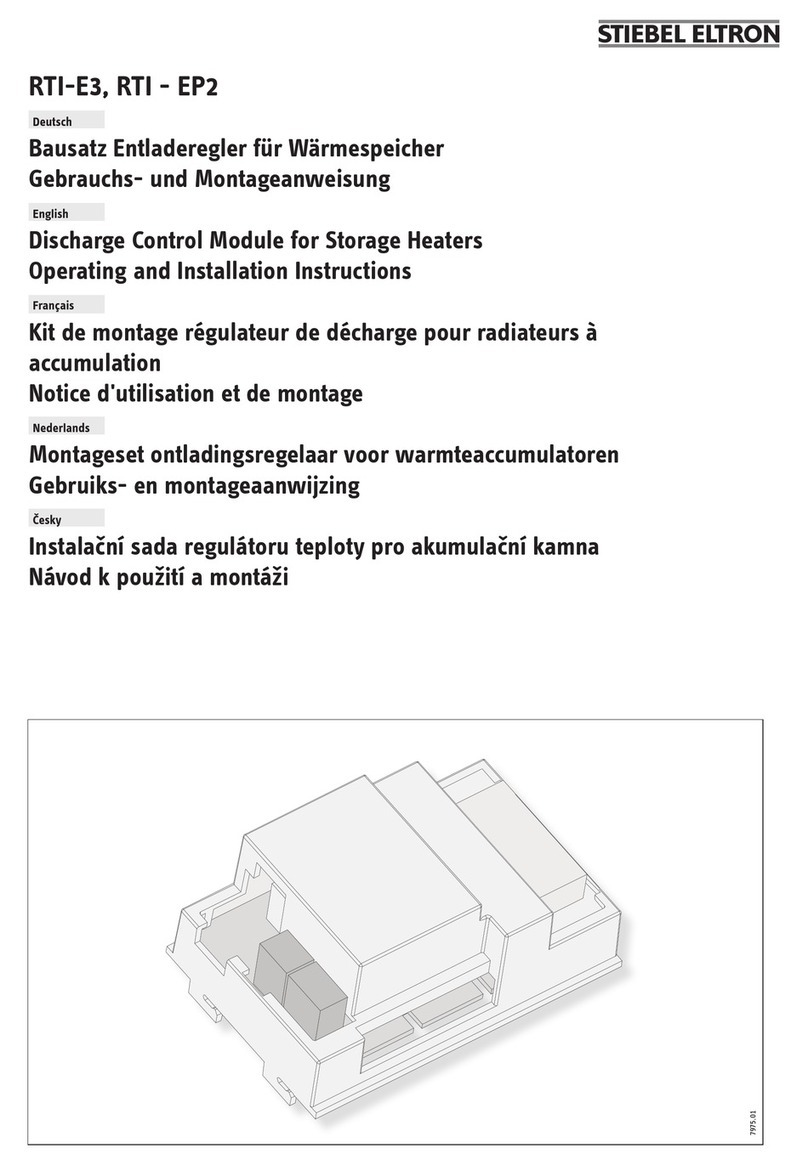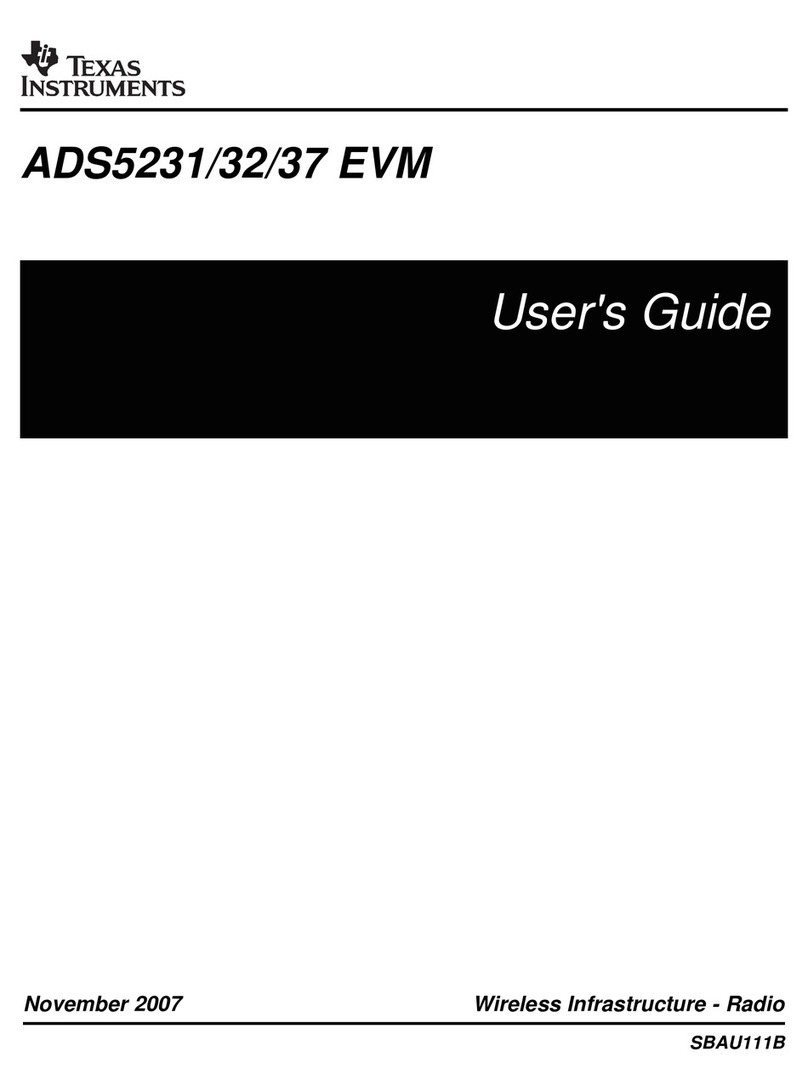flamco NFE Series User manual

www.flamcogroup.com/manuals
NFE-MVE
ENG Installation and operating instuction

NFE MVE
2

We reserve the right to change designs and technical specifications of our products.
3
ENG
Table of Content
1. Limitation of liability ...........................................................................................3
2. Warranty............................................................................................................3
3. Copyright...........................................................................................................3
4. General safety instructions...................................................................................3
4.1 Intended use and application of these instructions...............................................................4
4.2 Personnel qualification, prerequisites..................................................................................4
4.3 Personnel competence .........................................................................................................5
4.4 Intended area of application.................................................................................................5
4.5 Incoming goods....................................................................................................................5
4.6 Transportation, storage, unpacking......................................................................................6
4.7 Operating room....................................................................................................................7
4.8 Noise reduction....................................................................................................................7
4.9 EMERGENCY STOP ................................................................................................................8
4.10 Personal protective equipment ............................................................................................8
4.11 Excess pressure and temperature .........................................................................................8
4.12 Process water.......................................................................................................................8
4.13 Protective devices ................................................................................................................9
4.13.1..............................................................................................................................................Electrical
hazards ....................................................................................................................................................... 9
4.14 External forces......................................................................................................................9
4.15 Inspection before commissioning and repeat inspection ......................................................9
4.16 Inspections according to Betriebssicherheitsverordnung - Druckgerät (Industrial Safety
Regulation - Pressure Device) ...............................................................................................9
4.17 Inspection of electrical equipment, repeat inspection ..........................................................9
4.18 Maintenance and Repair.....................................................................................................10
4.19 Foreseeable misuse............................................................................................................10
4.20 Residual hazards ................................................................................................................11
4.21 Type plates on the replenishment modules (only concerns MVE1) ......................................11
4.22 Warning signs in these instructions ....................................................................................11
5. Product description ...........................................................................................12
5.1 Component / equipment / combinations ............................................................................12
5.2 Combinations of NFE and MVE – areas of application..........................................................13
6. Mode of operation of NFE + MVE1 .........................................................................15
6.1 Control types .....................................................................................................................15
6.2 Operating modes [AUTO] [FILLING] [MANUAL] ....................................................................15
6.3 Monitoring .........................................................................................................................15
7. Mode of operation of NFE + MVE2 .........................................................................18
8. Installation.......................................................................................................19
8.1 Setting up/mounting..........................................................................................................19
8.2 Hydraulic connection .........................................................................................................20
8.3 Electrical connection..........................................................................................................20
8.4 SCU control unit .................................................................................................................23

Manual NFE-MVE
4
9. Operation MVE1 ................................................................................................24
9.1 Handling - Menu ................................................................................................................24
9.2 Process indication .............................................................................................................25
9.3 Menu symbols ....................................................................................................................25
10. Commissioning MVE1.........................................................................................26
10.1 Initial commissioning .........................................................................................................26
10.2 Parameterisation on initial commissioning.........................................................................26
10.2.1............................................................................................................................ Menu B/D, selection
menus ....................................................................................................................................................... 27
10.2.1....................................................................................................................................Menu E, service
menu27
10.2.3.............................................................................................................................. Menu F, parameter
menu28
10.2.4.............................................................................................................................Menu G, equipment
menu29
10.3 Menu sequence, example MAG...........................................................................................31
11 MVE1 errors......................................................................................................32
11.1 List of errors / error messages ............................................................................................32
11.2 Troubleshooting.................................................................................................................33
12 Maintenance.....................................................................................................34
13 Module replacement of water treatment...............................................................35
14 Taking out of service, removal.............................................................................36
Appendix
Appendix 1. Technical data, Specifications ............................................................37
Appendix 2. Control unit terminal plan.................................................................39
Appendix 3. Dimensions and weights ...................................................................40
Appendix 4. Installation examples .......................................................................41

We reserve the right to change designs and technical specifications of our products.
5
ENG
1. Limitation of liability
All technical information, data and instructions for executable actions and actions to be executed
are up to date and current at the time of going to press. These contain our current state of
understanding and experience to the best of our knowledge. All technical modifications due to
the further development of the Flamco product described in these operating instructions are
reserved. Therefore, these technical specifications, descriptions and figures cannot be used to
derive any claims whatsoever. Technical representations, drawings and graphics may not necessarily
correspond to the actual item supplied in terms of assemblies, single parts or spare parts. Drawings
and images are not true to scale and also contain symbols for reasons of simplification.
2. Warranty
The corresponding information is contained in the General Terms and Conditions of Business (GTCB)
and does not form part of these instructions.
3. Copyright
These instructions are to be treated in the strictest confidence. They are to be used by authorised
personnel only. Any transfer to third parties must be prevented. All documentation is protected
within the meaning of copyright law. These documents must not be passed on and/or duplicated,
not even in the form of extracts; their contents may not be exploited and/or passed on to any third
parties unless expressly permitted. Violations are liable to prosecution and incur an obligatory
payment of damages. We reserve all rights for the exercise of industrial property rights.
4. General safety instructions
Any disregard or incomplete consideration of the instructions and measures specified may endanger
persons, animals, the environment and property. Non-compliance with safety regulations and any
neglect of the usual precautionary measures can lead to the loss of any claims for compensation in
the event of damage.
Definitions
• Operator: Natural or legal person who owns and uses the product or who is given
the product for use on the basis of a contractual agreement.
• Client: Legally and economically responsible client in the execution of
construction projects. A client may be a natural as well as a legal
person.
• Responsible person: Person instructed by the operator or the client to carry out actions.
• Qualified person: A person who possesses the necessary specialist knowledge as
a result of their vocational training, professional experience and
contemporary professional activity. This includes that these persons
have knowledge of applicable national and internal safety regulations.

Manual NFE-MVE
6
4.1 Intended use and application of these instructions
The following pages give the basic information, requirements, measures and technical specifications
that enable competent personnel to handle and use this product safely and within specifications.
Responsible persons or agents who perform the services required must have carefully read and
understood these instructions.
The required performances are:
Storage, transportation, installation, electrical installation, initial commissioning and
recommissioning, operation, maintenance, testing, repair and removal.
For use in installations that do not comply with the applicable European regulations, European and
harmonised standards and applicable technical rules and guidelines issued by the professional
associations for this area of application, this document is not suitable and can be used for
information purposes only. In order to be continuously available for consultation, these instructions
must be provided in the immediate vicinity of the installed device, at least within the relevant
operating room.
4.2 Personnel qualification, prerequisites
All personnel must have the appropriate qualifications for performing the required services and be
physically and mentally qualified. The areas of responsibility, competence and supervision of the
personnel must be regulated by the operator.
Required performance Example for occupational/professional group Example for qualification
Storage, transportation Transportation, traic, warehousing Specialist for transportation and warehousing
Assembly, disassembly, repair, maintenance.
Recommissioning following addition of
component or modification, testing.
Installation and building technology Specialist for heating installations. Person
instructed for the operating room with
knowledge from these instructions
Initial commissioning with configured control
unit (standard case), recommissioning aer
voltage failure, operation (actions on the
terminal and the control unit SPC).
Electrical installation Electrical engineering Specialist for electrical installation.
Initial and repeat testing of the electrical
equipment.
Qualified person (QP) with approval by the
responsible energy utility company.
Testing before commissioning and repeat
testing
of pressure equipment.
Installation and building technology
in the technical association of technical
monitoring.
Qualified person (QP)

We reserve the right to change designs and technical specifications of our products.
7
ENG
4.3 Personnel competence
Instructions for operation are provided by the Flamco field sales service or oicers during handover
activities or upon request.
Training for the required performances: assembly, disassembly, commissioning, operation, testing,
maintenance and repair are part of the training and further education of the service personnel from
the Flamco branches or designated service companies.
This training includes instructions with regard to the prerequisites required on site but not with
regard to their execution. On-site services include transportation, the provision of an operating room
with the required basic structure for arranging and installing the equipment as well as the necessary
hydraulic and electrical connections, the electrical installation for powering the replenishment
equipment and the installation of signal lines for information technology equipment.
4.4 Intended area of application
Closed heating and cooling systems within which it is possible to operate pressurisation systems
with diaphragm pressure expansion vessels, as well as the external pressurisation with compressor
or pump in accordance with the requirements of DIN EN 12828 and VDI 4708-1, and the controlled
supply of process water for loss or initial filling quantities. Modular assemblies of this replenishment
equipment can be selected in accordance with the application required.
4.5 Incoming goods
The scope of supply must be compared with the items listed in the shipping documents and checked
for conformity. Unpacking, installation and commissioning must only be initiated if the product
complies with the intended use within specifications in accordance with the order process and order
commission. In particular, functional obstructions, component damage and personal hazards can be
caused if permissible operating or design characteristics are exceeded. If there is no conformity and
if the scope of supply is incomplete or damaged, application must be prevented.

Manual NFE-MVE
8
4.6 Transportation, storage, unpacking
The equipment is supplied in packaging units
that correspond to the model in accordance with
the order or the requirements of the transport
route and climatic zone. They meet at least the
requirements of the packaging guidelines of the
manufacturer. In compliance with this guideline
the replenishment equipment/modules are
supplied in cardboard boxes lying in a horizontal
position on special pallets or Euro pallets. The
pallets are suitable for transportation by means
of approved forkli devices. To do this, set the
largest possible fork external dimensions for the
pallet to prevent any tilting over of the load taken
up. Move the delivery item in the lowest possible
position and across the fork pairs.
If packages are suitable for transportation by liing means, they have markings for the attachment
points required.
Important note: Transport the packed scope of supply as close as possible to the intended place of
installation and use a horizontal surface area with load-bearing ground.
Attention: Actions and measures are required to prevent any uncontrolled dropping, sliding and
tilting of loads. Intermediate storage can also be eected in a packaged condition. Stacking of the
packaged equipment is permissible up to a maximum of four packaging units on top of one another.
Any stacking beyond this limit is to be prevented. Use only approved load-handling equipment,
safe tools and wear the necessary protective equipment.

We reserve the right to change designs and technical specifications of our products.
9
ENG
4.7 Operating room
Enclosed, frost-protected room that meets the requirements of the applicable European regulations,
European and harmonised standards and applicable technical rules and guidelines issued by
the professional associations for this area of use. For the application of the device modules from
these instructions, such rooms usually contain equipment for heat generation and distribution,
water treatment, electrical supply and distribution as well as measuring, control and information
technology equipment. Access by unqualified and non-instructed persons must be hindered or
prevented entirely. The installation location of the replenishment equipment/module must ensure
that the operation, use, maintenance, testing, repair, assembly and disassembly can be done
permanently without any hindrance or hazards. The construction ground, wall surface, set-up
surface for the equipment must ensure that stability / load capacity is guaranteed and maintained.
The maximum possible forces from the own masses including the water filling have to be considered.
If operationally required equipment with safety functions (e.g. system separators) are triggered,
this will cause the process water to be drained. It must be ensured that this water can be safely
discharged and that there is a safe drain or water collector to prevent any damage from water. This
also applies to the leakage of water due to component defects from all equipment located in this
room. (Protection of ground water: consider the additives!).
In case of insuicient load-bearing capacity, there is a risk of loads dropping, creeping and,
consequently, besides malfunctions, severe personal injuries are possible. The ambient atmosphere
must be free of electrically conductive gases, high dust concentrations and aggressive vapours. In
the case of flammable gases and gas mixtures, there is a risk of explosion. Due to the process, the
water temperature can be up to 90 °C at selected replenishment modules and, in cases of improper
operation, this may even be in excess of 90 °C. There is a risk of personal injury from burns or
scalding.
The operation of submerged equipment must be reliably excluded. Under these circumstances,
any short-circuiting of electrical equipment causes electrocution in persons and other living beings
in the water. There is a risk of malfunction and component damage or destruction due to water
saturation and corrosion.
4.8 Noise reduction
Ensure that in the installation the sound emission is minimised according to the state of the technical
art (e.g. by means of sound-absorbing pipe fixtures).

Manual NFE-MVE
10
4.9 EMERGENCY STOP
The required EMERGENCY STOP device is provided by the respective main switch on the control
unit. (This concerns the SCU on the MVE1 or the control of pressurisation, if the replenishment
components are thereby controlled).
If further safety chains with EMERGENCY STOP devices are required according to the design and
operating mode of the heat generator, these must be installed on site.
4.10 Personal protective equipment
Personal protective equipment (PPE) must be used for all hazardous work and activities (e.g.:
welding), in order to prevent or minimise injuries, if it is not possible to use other means. It must
comply with the stated requirements of the client or operator for entering the operating room or the
construction site.
Operation without prejudice to the specifications for the operating room: No protective equipment is
required. The minimum requirements are tight clothing and firm, non-slip and closed footwear.
Other performances require the body protection necessary for the activity to be carried out (e.g.:
transportation and setting up: Firm, tightly fitting work clothing, foot protection [safety shoes with
toe caps], head protection [safety helmet], hand protection [protective gloves]; maintenance, repair:
Firm, tightly fitting work clothing, foot protection, hand protection, eye or face protection [safety
goggles]).
4.11 Excess pressure and temperature
Equipment that is operated with replenishment systems/modules must ensure that it is reliably
prevented that the permissible positive operating pressure and the permissible media temperature
can be exceeded. The non-permissible pressure and temperature limitation can lead to component
overload, destruction, malfunction and, as a consequence, serious personal injury and/or damage to
property. Regular checks must be carried out on this safety-related equipment.
4.12 Process water
Types of water, non-flammable, without solid or long-fibre constituents, which, with their
ingredients, do not cause a hazard to operational readiness and do not damage or unduly influence
water-bearing parts of the replenishment device (e.g.: pressure-bearing components). Water-
bearing components are pipework, equipment and system connections, and the fittings and
sensors contained therein. The operation with non-permissible media may cause malfunction,
component destruction, and as a consequence serious personal injury and/or damage to property.
The operating/replenishment medium must meet the requirements of VDI 2035! Desalinated
waters must have a conductivity between 10 and 100 μS/cm at a pH value that does not exceed the
permissible limits according to VDI 2035 depending on the material used.

We reserve the right to change designs and technical specifications of our products.
11
ENG
4.13 Protective devices
The supplied equipment has the necessary devices. To check the protective eect, or restore the
initial conditions, the equipment must be taken out of service. Taking the equipment out of service
includes voltage disconnection and hydraulic shut-o.
4.13.1Electrical hazards
The protection type (IP code) of electrically operated components prevents personal injury due to
possibly fatal electric shock.
It is at least IP54 (5: protected against dust and contact, 4: protection against spray water on all sides)
The control cover, the cable glands as well as the device plug of the valve must be checked for their
protective function and firm seating before commissioning. Check the firm seating of the grounding
connection on the pipework line to be installed on site. The installed pressure sensor (MVE1) and the
pulse water meter (NFE1.2 or 2.2)) are operated with protective low voltage. Prevent welding work
on equipment parts to be added that is conductively connected to the replenishment equipment.
Welding currents that spread in an uncontrolled manner, or a non-permissible ground connection
cause a fire hazard and the destruction of parts of the replenishment device (for example, the control
unit).
4.14 External forces
Prevent any additional loads (e.g. forces from heat expansion, flow oscillations or own weights at the
inlet and outlet). They may lead to cracks and breaks in the water-bearing pipes and fittings, to the
loss of stability/carrying capacity and furthermore to failure, which may result in serious damage to
property and severe personal injury.
4.15 Inspection before commissioning and repeat inspection
They ensure operational safety and its maintenance in accordance with the requirements of the
applicable European regulations, European and harmonised standards and applicable technical
rules and guidelines issued by the professional associations for this area of use. The necessary
checks must be initiated by the owner or operator, and a test and maintenance log shall be kept for
the planning and tracing of the measures.
4.16 Inspections according to Betriebssicherheitsverordnung - Druckgerät
(Industrial Safety Regulation - Pressure Device)
Maximum periods for inspections of the replenishment module have not been defined. These must
be determined by the operator on the basis of manufacturer information as well as experience with
the mode of operation and the chamber load. The test can be carried out by a qualified person.
4.17 Inspection of electrical equipment, repeat inspection
Irrespective of the specifications of the property insurer / operator, it is recommended that
the electrical equipment of the replenishment device be verifiably tested together with the
pressurisation systems of the heating or cooling water systems, but at least every 1.5 years. (See also
DIN EN 60204-1 (2007).)

Manual NFE-MVE
12
4.18 Maintenance and Repair
The equipment of the replenishment device shall be taken out of service and secured against
unintentional recommissioning until the completion of the performance. The shutdown of electrical
equipment (control, solenoid valve, ancillary equipment) requires the power supply of the infeed to
the control unit to be deenergised.
If necessary, be aware of safety circuits and remote data transmissions that can lead to the triggering
of security chains or misinformation during the activities. Please note: Even if the control unit is
deenergised, it is still possible that a 230 V voltage / signal is still applied via the terminals 11, 12, 19
and 20! Existing instructions for the overall project of the heating or cooling water system must be
observed. To shut down hydraulic components, the relevant sections must be shut o via the ball
valves included in the scope of supply of the replenishment devices/modules.
Attention: The maximum temperature of the components carrying process water (fittings, pipelines,
supplementary equipment) can reach a value up to 90 °C for some assemblies and an even a higher
value in the event of impermissible operation. There is a risk of burns or scalding.
The maximum pressure of the components carrying process water may correspond to the
maximum response pressure of the safety valve of the system, as applicable to the components.
The replenishment modules NFE and MVE have a permissible positive operating pressure of 10 bar.
Eye or face protection is required if eye or face injuries caused by parts flying o or the splashing of
liquids are to be expected.
Unauthorised modifications and the use of non-approved components or spare parts are not
permitted. These actions cannot rule out serious personal injury and may endanger operational
safety. They lead to the loss of any liability and warranty claims.
It is recommended that Flamco customer service be commissioned for maintenance and repair.
4.19 Foreseeable misuse
• Operation with incorrect voltage and frequency.
• Infeed into domestic water systems and operation with medium that does not comply
with VDI 2035.
• Operation of the system with fully desalinated water.
• Operation with flammable, toxic or explosive media.
• Operation at non-permissible system pressure and a system temperature that is too high
or too low.
• Mobile application and use outside of the operating room.

We reserve the right to change designs and technical specifications of our products.
13
ENG
4.20 Residual hazards
See Section 4.7 Operating room.
4.21 Type plates on the replenishment modules (only concerns MVE1)
The type plate of the MVE1 module is part of the safety regulations. It must not be covered or
removed. Regularly check whether this is the case. The type plate details must be fully legible. A
damaged or illegible type plate must be replaced.
4.22 Warning signs in these instructions
Warning against dangerous electrical voltage. Non-compliance can endanger lives, cause fires and
accidents, lead to component overloading and destruction or functional impairment.
Warning against incorrect actions and incorrect starting conditions. Non-compliance may result in
serious personal injury, component overload and destruction or malfunction.

Manual NFE-MVE
14
5. Product description
5.1 Component / equipment / combinations
NFE1.x
MVE1
NFE2.x
NFE3
MVE2
* (Specification variable x: x=1 is the version for water meter without pulse output (WZ); x=2 is the version for water meter with pulse
output (IWZ) 10 litre/pulse).

We reserve the right to change designs and technical specifications of our products.
15
ENG
5.2 Combinations of NFE and MVE – areas of application
The replenishment for stationary installation can be pressure or level-controlled in adjustable,
monitored time intervals or replenishment quantities and serves primarily to compensate for loss
quantities in the system, but also for initial filling or refilling (only MVE1).
NFE1.x* MVE1
NFE1.x + MVE1
System separator variant for automatic
replenishment from domestic water networks
(according to DIN 1988 and DIN EN 1717) in pump
or compressor-operated systems for external
pressure maintenance (Flexcon M-K/S or similar)
whose system pressure is at least 1.3 bar below
the supply flow pressure of the domestic water
network, as well as a system separator variant for
automatic replenishment from domestic water
networks in systems with MAG with constant gas
cushion (Flexcon M, Flexcon Pro, Flexcon Top,
Contra Flex or similar) whose replenishment
pressure is at least 1.3 bar below the supply flow
pressure of the domestic water network.
NFE1.x* MVE2
NFE1.x + MVE2
System separator variant for automatic level-
controlled replenishment from domestic water
networks (according to DIN 1988 and DIN EN 1717)
in systems with pump or compressor-operated
systems for external pressure maintenance
(Flexcon M-K/U or similar with SDS/SPC control
unit) whose replenishment pressure is at least
1.3 bar below the supply flow pressure of the
domestic water network.
NFE2.x MVE1
NFE2.x + MVE1
Variant for automatic replenishment from district
heating networks in pump or compressor-
operated systems for external pressure
maintenance (Flexcon M-K/S or similar) whose
system pressure is at least 0.5 bar below the
system pressure of the district heating system,
and variant for automatic replenishment from
district heating networks in systems with MAG
with constant gas cushion (Flexcon M, Flexcon
Pro, Flexcon Top, Contra Flex or similar) whose
replenishment pressure is at least 0.5 bar below
the system pressure of the district heating system.

Manual NFE-MVE
16
NFE2.x MVE2 NFE2.x + MVE2
Variant for automatic level-controlled
replenishment from district heating networks
in compressor-operated systems for external
pressure maintenance (Flexcon M-K/U or similar
with SDS/SPC control unit) whose system
pressure is at least 0.5 bar below the system
pressure of the district heating system.
NFE3 MVE1
NFE3 + MVE1
Variant for automatic replenishment from district
heating networks or networks that already have
suitable system separation and water metering
devices, in pump or compressor-operated systems
for external pressure maintenance (Flexcon
M-K/U or similar) whose system pressure is at
least 0.5 bar below the system pressure of the
supply network, as well as a variant for automatic
replenishment from district heating networks
or networks that already have suitable system
separation and water metering devices, in systems
with MAG with constant gas cushion (Flexcon M,
Flexcon Pro, Flexcon Top, Contra Flex or similar)
whose replenishment pressure is at least 0.5 bar
below the system pressure of the supply network.
NFE3 MVE2
NFE3 + MVE2
Variant for automatic level-controlled
replenishment from district heating networks,
or networks that already have suitable system
separation and water metering devices, in pump
or compressor-operated systems for external
pressure maintenance (Flexcon M-K/U or similar
with SDS/SPC control unit) whose replenishment
pressure is at least 0.5 bar below the system
pressure of the supply network.

We reserve the right to change designs and technical specifications of our products.
17
ENG
6. Mode of operation of NFE + MVE1
6.1 Control types
Level controlled [%]
Control is eected by means of an external potential-free signal or a potential signal (230 V),
depending on the control unit used, a pump or compressor-controlled pressure maintenance
system. Following signal input the solenoid valve is opened and replenishment takes place until the
level value set at the control unit of the automatic expansion device is reached.
Pressure-controlled[P]
Control is eected via the pressure sensor in the MVE1 assembly. Aer the system pressure has
decreased to the switch-on pressure pON, the solenoid valve is opened until the switching dierence
(switch-o distance from pON) is reached.
For both control types, running time or filling quantities (in the case of pulse water meter IWZ), as
well as the pressure in the system, are monitored.
6.2 Operating modes [AUTO] [FILLING] [MANUAL]
The operator has the option of operating the system in the modes Auto (Automatic), Fill ((Initial)
filling) and Manual (Manual operation).
In comparison to the automatic mode, increased monitoring limits apply to the filling mode. Manual
mode is only intended for service purposes in order to check the function of the solenoid valve. In
manual mode, the solenoid valve can be triggered each time for maximum 20 sec. Thereaer, it
closes automatically and the control unit remains in manual mode until there is a changeover to a
dierent operating mode. It is not possible to switch the solenoid valve in manual mode, as long as
the maximum pressure alarm applies.
6.3 Monitoring
The objective of monitoring is to detect replenishment errors early and to protect system
components as well as possible by means of corresponding signals or an automatic shutdown of
the replenishment. In particular, leakages are to be detected early by a comprehensive monitoring
management and to be limited in terms of their quantity.

Manual NFE-MVE
18
Runtime monitoring (in automatic mode AUTO)
The operator has the option of parameterising
these freely. If the following conditions are not met,
the system goes into error. The potential-free fault
contact is opened until manual acknowledgement
takes place. The actual running time must not
exceed a maximum time per trigger (cycle).
The Minimum interval between two cycles (pause) must not underrun a programmable time.
The Maximum cycles per time window must not exceed a programmable number in the running
time window. (E.g. not more than 3 cycles in the last 8 hours)
Filling volume monitoring (in automatic mode AUTO)
Prerequisite: pulse water meter (IWZ) from NFE1.2 or 2.2 connected to MVE1 and activated.
The operator has the option of freely parameterising the filling quantity monitoring. The actual
replenishment quantity must not exceed the maximum quantity per triggering (in one cycle). At the
same time, the Minimum interval between two cycles must not underrun a programmable time.
The Maximum cycles per time window must not exceed a programmable number in the running
time window. (E.g. not more than 3 cycles in the last 8 hours) If these conditions are not met, the
system goes into error. The potential-free fault contact is opened.
Monitoring of initial filling (in FILLING mode)
For the initial filling of a system, the filling mode Filling can be used. The narrower monitoring limits
of the automatic mode are switched o here. Depending on whether the pulse water meter of NFE1.2
or 2.2 is connected to MVE1 and activated, the Max. initial filling quantity or Max. initial filling time
can be monitored. When initial filling has been eected, the system switches automatically to the
automatic mode AUTO.
If the max. initial filling quantity / initial filling time is reached when the system is being filled, the
system sets itself to an error condition; the potential-free fault contact is opened until manual
acknowledgement takes place.
Monitoring, pressure increasing quantity (in automatic mode AUTO)
Prerequisite: Pulse water meter (IWZ) from NFE1.2 or 2.2 connected to MVE1 and activated.Within
this defined replenishment quantity the system pressure must increase by at least 0.1 bar.If this
condition is not met, the system goes into error. The potential-free fault contact is opened until
manual acknowledgement takes place. This monitoring can be switched o by using the input 0.
(e.g. during replenishment into pressureless expansion vessels)
A A A
B B
CA Cycle
B Pause
C Time window

We reserve the right to change designs and technical specifications of our products.
19
ENG
Monitoring, pressure increasing time (in automatic mode AUTO)
Within this defined replenishment time the system pressure must increase by at least 0.1 bar.If this
condition is not met, the system goes into error. The potential-free fault contact is opened until
manual acknowledgement takes place.This monitoring can be switched o by using the input 0 min.
(e.g. during replenishment into pressureless expansion vessels)
Pressure monitoring
Excess pressures and overfillings must be avoided.
Therefore, pressure deviations are signalled.
For this purpose, the operator must parameterise some pressure values:
pSV – Response pressure of the safety valve
pON- Switch-on pressure of the replenishment
Switch-o distance from pON (switching dierence)
Max. alarm distance pSV – Switching dierence to the response pressure of the safety valve
Min. alarm distance of pON – Switching distance to pON for minimum pressure alarm (≥ p0+0.2 bar)
If pSV minus max. alarm distance of pSV is reached, the maximum pressure alarm is signalled.
The fault contact is opened until the pressure decreases again to below this value and the fault has
been acknowledged. A filling (also in manual mode) is not possible as long as the maximum pressure
signal is present. By entering 0 bar for max. alarm distance pSV, the maximum pressure alarm can be
switched o.
If pON minus min. alarm distance of pON is reached, the minimum pressure alarm is triggered. The
fault contact is opened until the pressure increases again to above this value and the fault has been
acknowledged. In initial filling mode FILL, the minimum pressure alarm is not indicated and the fault
contact is not triggered. If, therefore, the minimum pressure alarm has been triggered in automatic
mode for any reason (for example, maintenance, service work on the mains supply), this minimum
pressure range can be automatically exited again by changing the operating mode (FILL mode). 0 bar
for min. alarm distance of pON switches o the minimum pressure monitoring in automatic mode.
Monitoring of water treatment quantity
If this is connected in the replenishment line, and the IWZ is also set to ON, the amount of residual
water that can be soened with the water treatment module can be read o in litres at the bottom
right in the process menu. At 0 litres, the collective error message is triggered and an error message
is issued. Negative values mean that the permissible treatment quantity (capacity) in litres has been
exceeded. However, replenishment still remains in operation.
0 bar
pON
pOFF
Maximum pressure alarm
pSV
= p 0 + 0.2 bar
p stat. + steam + 0.2 bar
Minimum pressure alarm
Switch-o distance pON
Max. alarm distance pSV
Min. alarm distance pON
pSV = 3.0 bar
Pre-
= 0.3 bar
= 0.3 bar
pON = 1.6 bar
= 0.2 bar
setting

Manual NFE-MVE
20
7. Mode of operation of NFE + MVE2
The solenoid valve is controlled directly (230 V/50 Hz). Depending on the level, the solenoid valve
(MV) is switched by the Flamco SDS or SPC pressure maintenance control unit in order to control the
filling volume of the expansion vessels. The preconditions for a fault-free functionality are, among
other things, correct installation, proper connection to the SDS or SPC pressure maintenance control
unit and operation within the technical parameters. (Refer to the technical specifications.) The
operation mode and replenishment monitoring are realised by the SDS/SPC pressure maintenance
control unit. (Refer to the instructions for the SDS/SPC pressure maintenance control unit.)
This manual suits for next models
15
Table of contents
Other flamco Control Unit manuals
